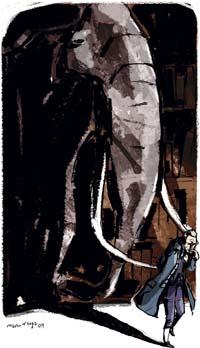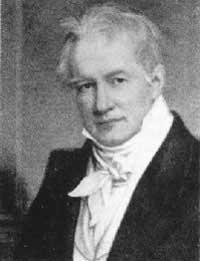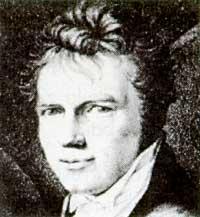In vain we try to enclose nature
2021/04/27 Nahia Seijas Garzón - Geologoa. Doktoretza aurreko ikertzailea Bilboko Hezkuntza Fakultatean (EHU) Iturria: Elhuyar aldizkaria
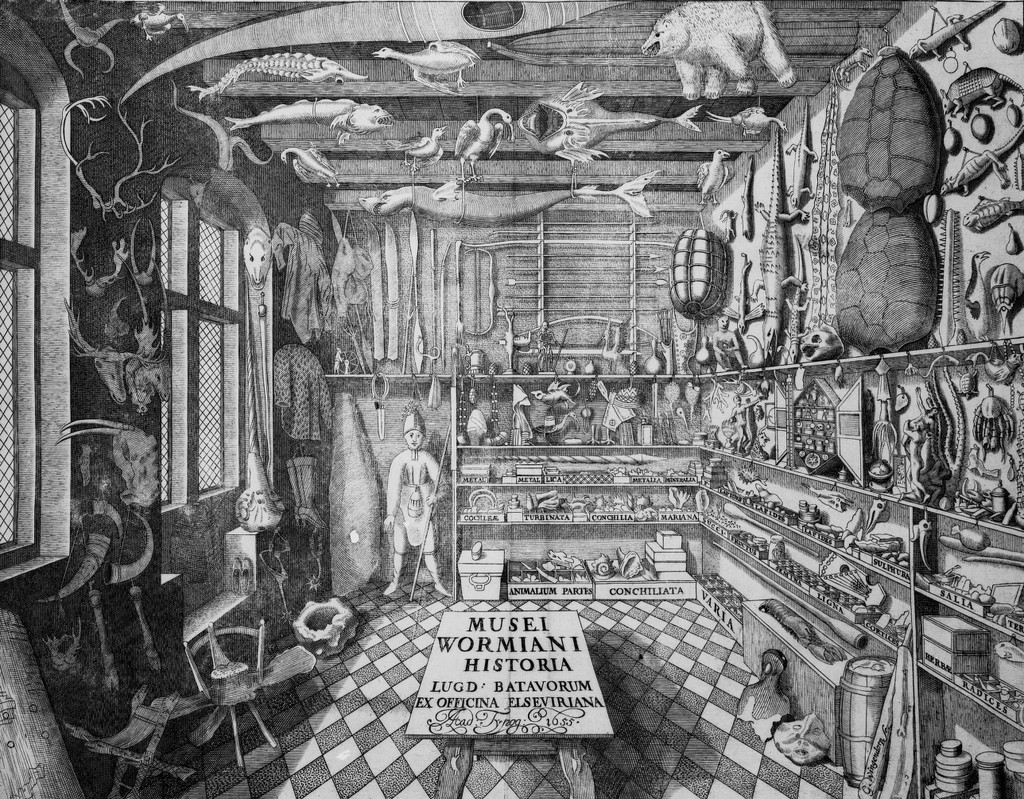
The school laboratory is a cabinet of curiosities. The students, passionate, chase the teacher in zigzag, from one corridor to another, by the stairs and in front, until they reach that green door. In the poster they read “Biology and Geology Laboratory” and at the same time they wonder what fantasy they will find inside.
The door of the laboratory is enraged when opened, inside everything is dark and cold. Smells like chemicals. The professor takes out of his warehouse the collection of strange objects of dust and distributes them on the tables: precious stones, some fossils, very colorful and brilliant minerals. Students will try to identify and classify these pieces with the help of a guide.
XVII. and XVIII. In the European cities of the 20th century there was a great fondness for the collection. Kings, aristocrats, clerics and even lawyers, doctors, pharmacists and artists tried to bring nature into a room. With this intention, jewelry cabinets, naturalia (vegetable, animal and mineral) and artificialia (archaeological remains, sculptures, paintings...) were built to accumulate and present numerous objects of the kingdoms.
At that time, European colonial expansion revealed the enormous human and natural diversity of the world, and these cabinets became inventories of this new world. Its architecture and furniture were oriented to the ordination and classification of singular objects, only thus could one understand and explain nature according to the thought of the time.
The cabinet of the Danish physician Olaus Wormius (1588-1654) is a good example (Figure 1). If we dive into it, we can see objects of all kinds: on the shelf on the right, specimens of minerals and fossils; on the wall on the left, adages and skulls, and on the back wall, weapons. If we look up we would see fish and dried bodies of other animals hanging from the ceiling.
These eclectic zones were adapted to the new times, enriching and specializing gradually. Finally, the cabinets of curiosities became museums of Natural History and would constitute the key to scientific research and dissemination of the time.
The wisdom of then had museums. Inside, both conventional and exotic species could be found: the most spectacular ones kept in the showcases, the rest in containers, compartmentalized boxes or golden wooden pedestals. They were research spaces, but also leisure areas.
Although all specimens were collected abroad, fieldwork was not as important and prestigious as that of the museum, since sampling was aimed at a larger target. The context was not important, the samples acquired scientific value in the museum itself when naturalists compared them with other pieces. Why? This comparison allowed identifying and classifying new specimen inputs, which was the real objective of scientific research.
XIX. At the beginning of the 20th century, this form of work began to change, when they unexpectedly entered the research of space and temporality, along with the new research questions of naturalists.
On 23 June 1802, Alexander von Humboldt, Aimé Bonpland and Carlos de Montúfar climbed the Chimborazo volcano, considered at that time the highest mountain in the world. The ascension was very hard for naturalists. It was a cold and cloudy day, and they had to climb the abrupt rocks, with gigantic precipices on the sides, and of course without oxygen, breathe perfectly. However, the three people reached 5,917 meters, very close to the top.
The trip to Quito and the climb to the volcano were very significant for Humboldt. He was a very attentive person with an incredible ability to remember and relate all the details. Thanks to this, he recalled the vegetation and the rocky structures seen in previous trips (Alps, Pyrenees and Tenerife) and compared them with the views in Chimborazo. The great similarities he found among these remote places shocked him. Nature seemed like a net of a thousand threads, all the elements were united!
Humboldt managed to get away enough to observe an integral vision. He discovered that the plants, according to their altitude, were arranged in strata: in the lower valleys he discovered palm trees, tropical forests of bamboo and colorful orchids; above there were conifers, oaks and shrubs similar to European forests; and then, alpine vegetation and lichens. In front of the clouds, rock.
These climatic zones were represented by Humboldt in a drawing of Chimborazo. He expressed vegetation layers based on their altitude, along with data on temperature, humidity and pressure. He then compared the climatic zones of Chimborazo with those of other latitudes (Figure 2).
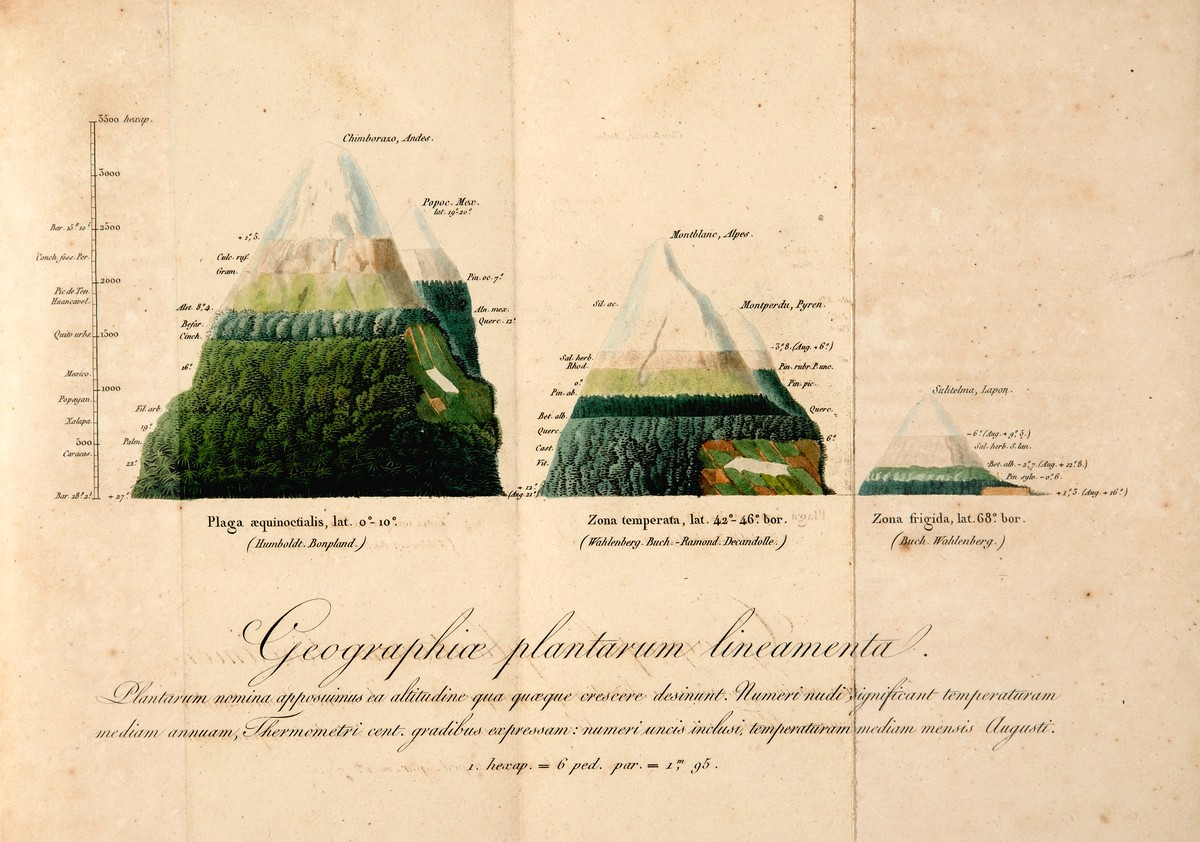
Humboldt was the first scientist to consider nature as a whole. His work transformed the Natural History of the time, which until then described and classified objects on a small scale and in isolation. We now know that the physical context and interactions between the elements are essential to the understanding of nature, which has at least three dimensions.
After a long five-year American expedition, Humboldt left the United States to France. He arrived in Paris and decided to stay there. Muséum national d'Histoire naturelle, a place admired by scientists from all over Europe, was located in that city. There he met excellent naturalists: one of them was Georges Cuvier, the next protagonist.
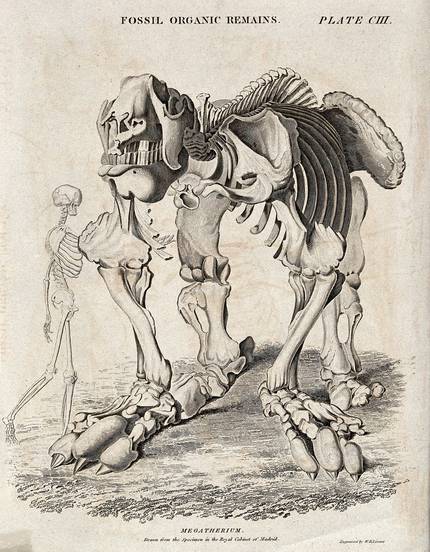
Cuvier was an anatomist, but a commission received from Madrid brought him closer to geology: He was sent the fossil skeleton of a giant animal found in Buenos Aires (Figure 3) to produce a scientific report. Cuvier baptized this animal as Megatherium (the great beast). After the anatomical investigation of the fossils, he concluded that it was a new animal, the lazy family, until then unknown to science, and that it would probably have disappeared. Species extinction was a controversial hypothesis on which scientists did not agree.
Cuvier, by comparative anatomy, studied the remains of other living beings to prove the hypothesis of their extinction. Thus, he meticulously compared the remains of skeletons of living elephants with those of fossil elephants, arriving again to the same conclusion: the fossil elephant or mammoth was a newly discovered species, distinct from living elephant species, which was expired.
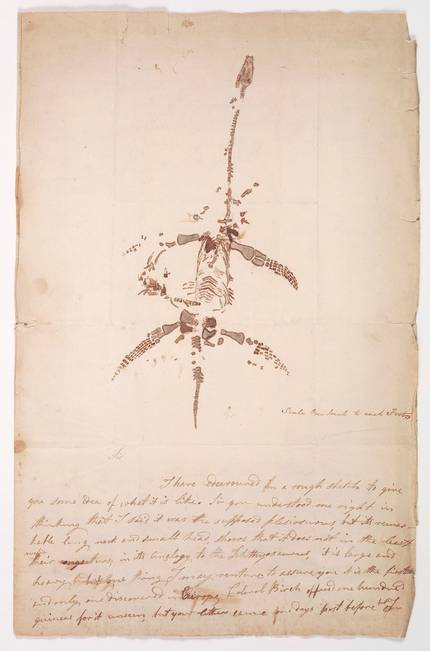
It was the golden age of paleontology. Naturalists from different places collected fossils and began to describe numerous missing species. Mary Ann Anning was one of the main fossil seekers of the hour. Woman of humble origin, born in England, with a life dedicated to the collection and sale of fossils. Anning learned to search and collect fossils with great mastery, trained to interpret what he saw. The scientists of the time knew him well and had some respect for him. He discovered, among others, fossils of ichtiosaurs (the first discovered in England), plesiosaurs (figure 4) and pterodactilos (the last two until then were unknown species).
Fossils were rare residues. Some looked like shells and bones, but they were actually part of the rock: remains turned into stones. Some naturalists thought that if fossils were part of rock strata, perhaps they could provide additional information about fossils and, conversely, about rock strata. In fact, each fossil only appeared on certain rocks.
Thus, Cuvier decided to leave the museum to the countryside to study the fossils in situ in its rocky strata. In a lecture given in 1801, he noted that the greater the depth to which the rocks are, and the older they were, the more unknown the fossils were, the more different from the current animal species.
If each stratum has arisen at one time and has different fossils, when we see a continuation of strata from bottom to top we read a story in which fossils vary according to time. Although Cuvier considered that the causes of this change of fossils were catastrophes and extinctions of species, Jean-Baptiste Lamarck (a contemporary of Cuvier who worked in the same Museum) proposed that species could evolve over time.
Finally, Natural History included the history of nature.
From then on, the work of naturalists focused on reconstructing the history of Earth and life, becoming a nightmare for the defenders of biblical chronology. Writer John Ruskin said: "If geologists leave me alone! At the end of every Biblical verse, I hear their hammerings" (Ladow, 1971).
Gradually, according to the type of rock and its fossils, the history of the Earth and of life was divided into several epochs (Figure 5): the oldest rocks had no signs of life, and their epoch was called Azoico; above was the Eozoic, which contained traces of simple life forms; and after these strata, the Paleozoic. Within this epoch three epochs could be distinguished: in the lower strata, the time of the fish; above, that of the plants; and finally, that of the amphibians. The later epoch, Mesozoic, was an undisputed era of great reptiles; and, finally, that of the Cenozoic, our era, that of mammals.
Life has history. Earth has history. Nature does not exist in the abstract, it exists in space and time and is understood in space and time. In vain we try to fill nature: nature is movement, permanent creation, transformation. Biological and geological phenomena have four dimensions, changing and unrepeatable, which are the basis of their beauty.
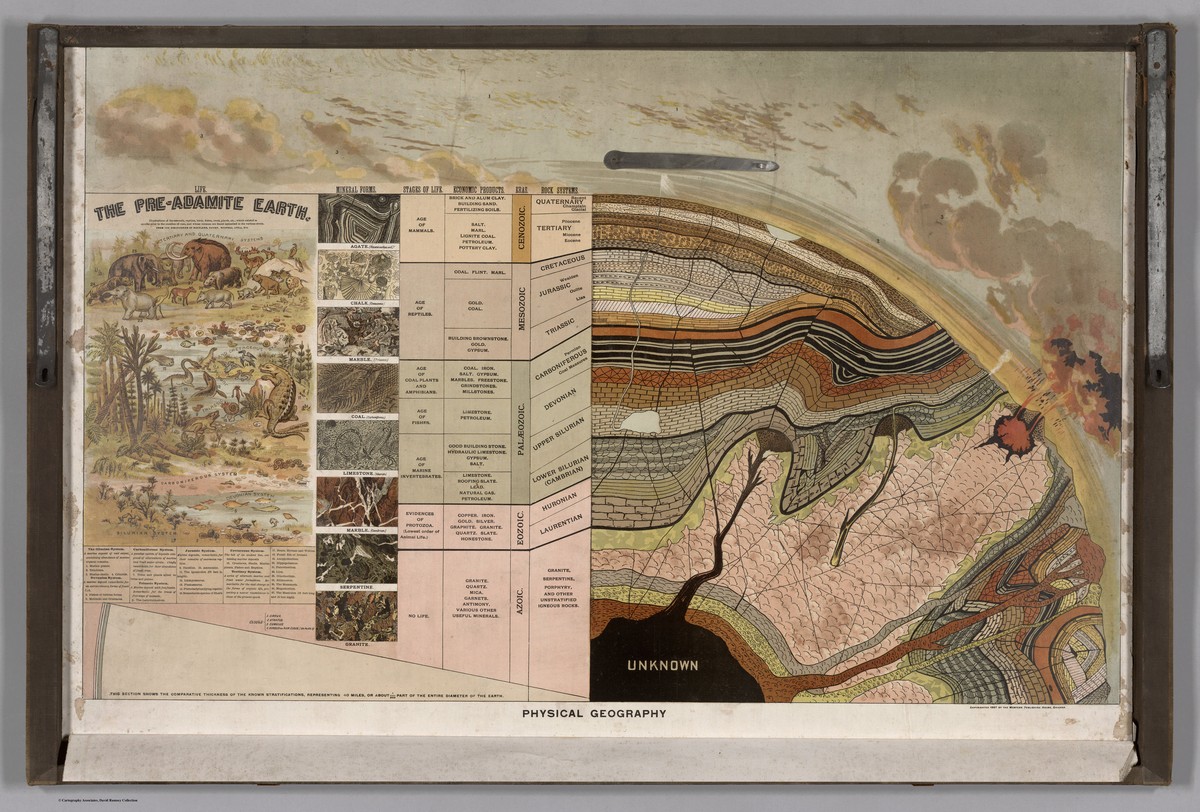
Bibliographic sources
Related information (2007) History of Geology. Sarrera. Thematic Outreach Library 83. Editorial Montesinos: Barcelona. 230 pp.
Fernández M.D. Uskola A. and Nuño T. (2006) Women in the history of geology (I) From antiquity to the 19th century. Earth Science Teaching, 14(2), 118-130.
Landow P. G. (1971) Chapter Four: Ruskin’s Religious Belief. In: Aesthetic and Critical Theory of John Ruskin (pp. 241-318). Princeton, NJ: Princeton University Press. Chapter: http://www.victorianweb.org/authors/ruskin/atheories/4.2.html
D. Pardo-Tomás (2018) Natural history and collecting in cabinets of curiosities and paper museums. In Cabré Abete M. and Cruz de Carlos Varona M. (Ed.) María Sybilla in Meria y Alida Withoos: mujeres, arte y ciencia en la Edad Moderna (pp: 69-76). Editorial Universidad de Cantabria: Santander.
Rudwick M. (2005) Picturing Nature in the Age of Enlightenment. Proceedings of the American Philosophical Society, 149(3), 279-303.
Wulf A. (2019) The invention of nature. Editorial Penguin Random House: Barcelona. 578 pages

Gai honi buruzko eduki gehiago
Elhuyarrek garatutako teknologia




